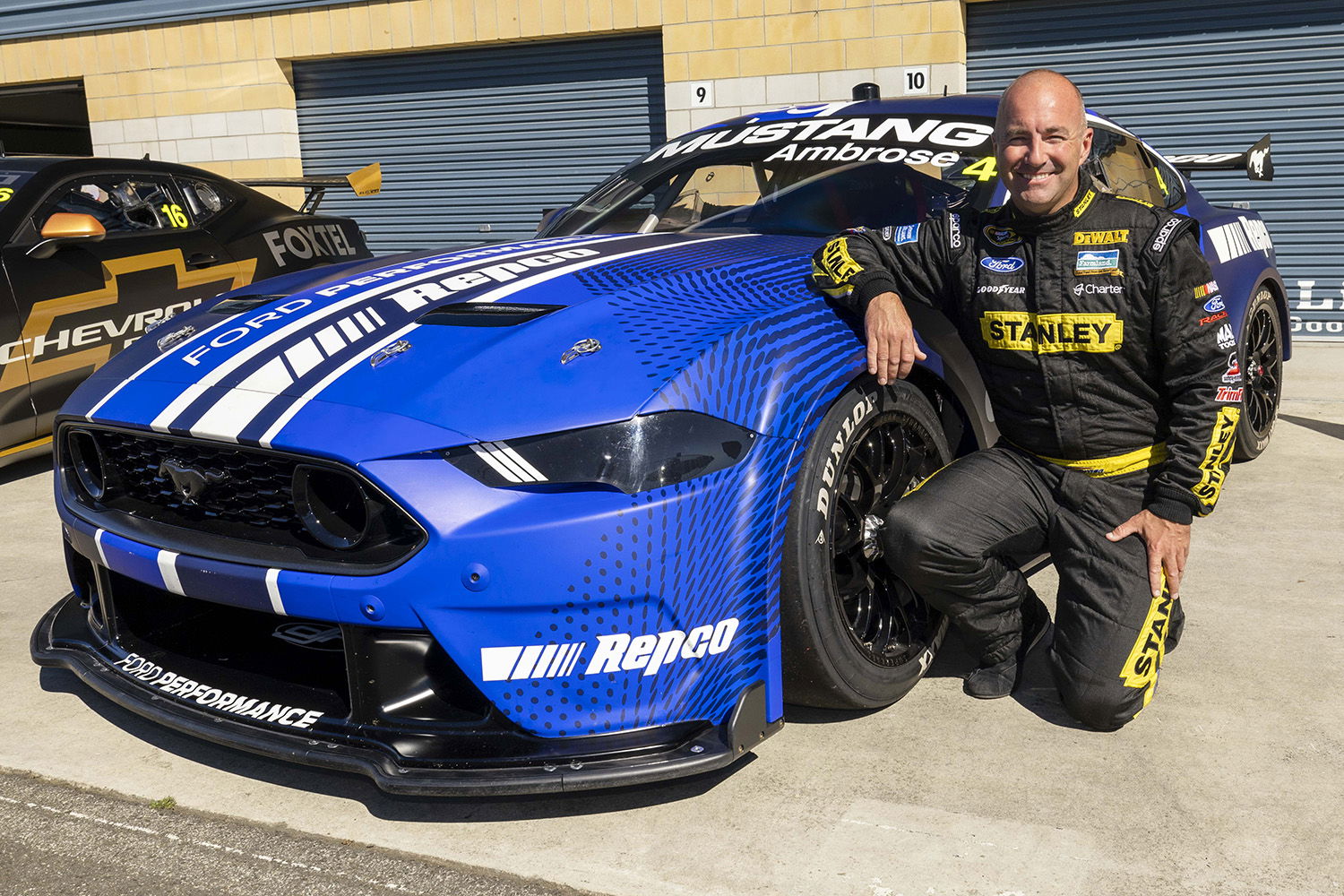

Marcos Ambrose has detailed how he thinks Supercars could solve one of what he thinks is its biggest problems with Gen3.
The two-time Supercars champion got his first taste of the next-generation Ford Mustang at last weekend’s Tasmania SuperSprint.
At his home circuit, Symmons Plains International Raceway, Ambrose described the car as being “old school” in its characteristics.
He did, however, have one bone to pick with the car. Its tyres.
The Dunlop tyre compounds the incumbent Gen2 cars run with are what Ambrose describes as peaky.
A peaky tyre is one that has a small operating window in which the tyre works at its best before losing grip.
Ambrose believes Supercars could benefit from a tyre that has a wider working window, more akin to that seen in NASCAR.
Dunlop is in the midst of developing new tyres for the Gen3 cars.
“For me, this is my theory on racing having experienced a lot of racing around the world, more focus needs to be put into the type of tyre that you race on to make it a more entertaining race and make it better for passing and so forth,” Ambrose explained.
“I like a big, fat, doughy slip angle so the drivers can really rag on the car and push it hard and get away with it.
“You get a tyre that’s too peaky in its grip – you get it up to temperature and its maximum grip, like a pyramid, really peaky – you get too hot, and it just drops away too quick. I like a tyre that’s a bit flatter on its curve of grip to heat.
“So I think that’s probably an area of focus that I’d like to see them really look at. I know that the tyres are still open at the moment. We’ll see, but that’s the tyre that they’re currently racing on and that’s the tyre that I’ve just experienced.”
Tyres have been a bone of contention in recent years.
Supercars and category controlled supplier Dunlop have developed a super soft tyre, which was designed to suffer significant fall-off.
Although the window is wider between its peak performance and maximum drop-off, the super soft tyre degradation hasn’t been as harsh as expected.
For Ambrose, it’s not just about the amount of grip but the grip curve as well.
“In the tyres that I’ve come across and raced on in the United States, the cross-ply tyre with a big bulgy, rubber carcass, especially on the road racing stuff, the Hoosier that Trans Ams are running on, it’s got good grip, but it’s got good grip with a lot of slip, so the drivers can go past the tyre and actually slip the car or slide the car and get away with it,” said Ambrose.
“They don’t lose all the grip. Like when a car is edgy, where it’s like it’s there then it’s gone, that’s a slip angle or it’s a tyre grip or a car grip level that is sort of there and then it’s gone. Like a cliff edge.
“I like a nice flat [grip curve], if you can get away with that. I think that the categories that I’ve enjoyed watching and participating in tend to have a tyre that reflects that.
“They’re all different makes, brands, or whatever, but a tyre that a driver can really over-push the car and get away with it for a few laps, I think that’s what we’re looking for.
“So you see a lot of aero tight in Supercars right now where they catch up to them and one slip of the front tyres and the front tyres are gone.
“You need a bit more room for the drivers to push and get away with it for a few laps before the tyre goes away.
“But that’s just my opinion on it, just coming from a fan really. I’m a fan. I want to see good racing. I want to see drivers really duking it out, I want to see cars moving around, I want to see aggressive passes, cars sliding, and rubber getting laid down on the track.”
Gen3 testing is set to resume at the Phillip Island Grand Prix Circuit in the days after the Formula 1 Australian Grand Prix, which takes place across April 7-10.




















Discussion about this post